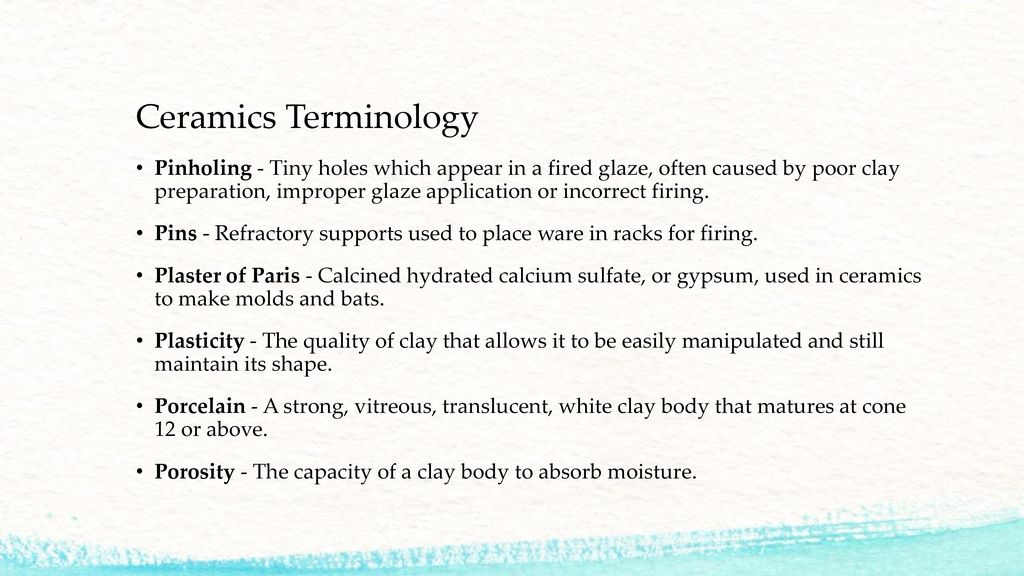Ceramic Shape Terminology

The pre firing of a ceramic material to remove all moisture and burn off any oxides and gases.
Ceramic shape terminology. Underglaze a colored liquid clay that is applied to greenware and sometimes bisque then coated with clear glaze. Almost completely obsolete in pottery today. When purchasing ceramic pieces it is important to consider the type of glaze in terms of food safety durability and fit with the underlying claybody. Throwing creating ceramic shapes on the potter s wheel.
Exceptions are those used for technical structural or refractory applications. Most stains are ground glass and are highly toxic in. A fired clay material click here to learn more about the development of ceramic on our blog. Wash ceramic paint applied to clay body and then wiped back so color is in the detail of the piece.
Wedging a method of kneading clay to make it homogenous by cutting and rolling. An initial firing of the shaped raw materials produces a hard tile body or bisque and then a re firing of the bisque takes place once. Polishing leather hard clay by rubbing with a smooth stone or back of a spoon etc. Most are stable up to cone 5 many to cone 10.
1 the art and wares made by potters. All fired ceramic wares or materials which when shaped contain a significant amount of clay. Stoneware all ceramic wear fired between 2 100 and 2 300 degrees. Throwing to form a shape such as a mug vase bowl on a banding wheel or pottery wheel.
Vitrification the firing of pottery to the point of glossification. The art of making objects of clay and firing them in a kiln. Wares of earthenware and porcelain as well as sculpture are made by ceramists. 2 a ceramic material 3 a place where pottery wares are made.
Our glossary defines language used by tile suppliers designers and installers for ceramic marble granite floor glass tile and much more. Acid washed a treatment applied to the face of a stone to achieve a texture. Transparent glaze transmits light clearly. Double fired or bicottura tiles are glazed ceramic tiles produced by a procedure that breaks the firing process in two phases.
Double fired or bicottura tiles. Glass forming minerals and ceramic stains that are applied to the body or bisque of a ceramic tile in a matte semi gloss or high gloss finish. See also claybody glaze fit high temp glaze intermediate glaze low temp glaze. A mold and allowing it to harden thereby taking on the shape of the confining mold.
Offers better stain and moisture resistance than unglazed tile as well as a hard non porous impermeable surface after firing. Enamel is also a ceramic technique. Ceramic colorants that have been fritted in order to eliminate solubility problems and give greater stability in firing and truer color before firing.














































